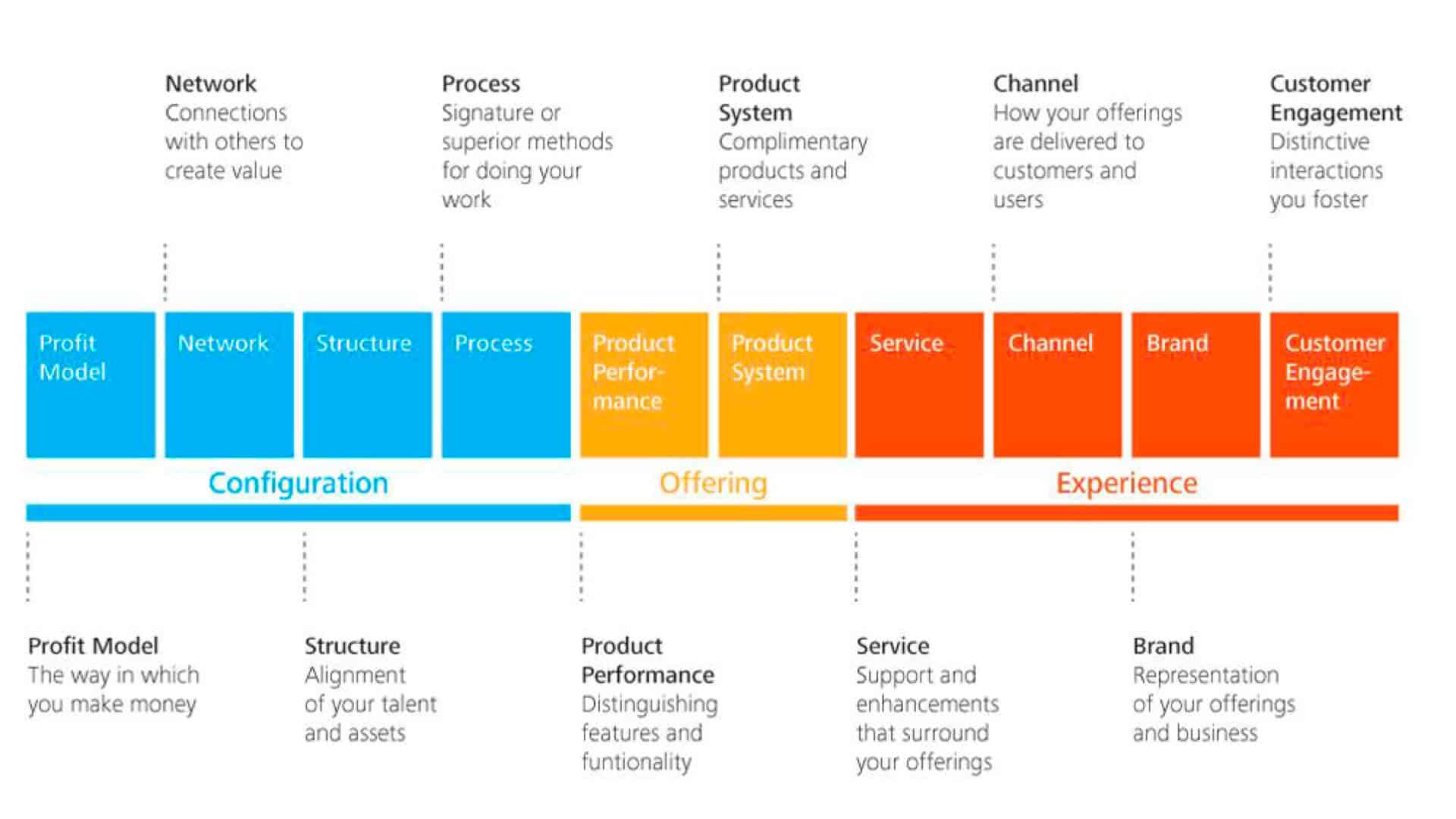5 Types of Innovation
If you carefully orchestrate 5 types of innovation – out of possible 10 types – you will almost always get disruptive innovation. That is the message shared by Larry Keeley – president and co-founder of Doblin, Inc., an innovation strategy firm known for pioneering comprehensive innovation systems that materially improve innovation success rates.
Without innovation, efforts at digital business transformation are likely to lead to uninspiring attempts to keep doing the same things but with new technology, which might cut some operational costs, but is neither innovative or transformational. This is why innovation capability is such a key component of “effective” digital business transformation.
Innovation Definition – Plus 15 Real-World Examples and More
Larry and his colleagues separate 10 types of innovation into three categories as shown below, which helps see how the limiting scope of many organisations' innovation efforts only scratches the surface of what innovation can achieve.

3 Categories of Innovation
1. THE CONFIGURATION CATEGORY
This focuses on the innermost workings of the enterprise and its business systems.
.
- The PROFIT MODEL is how you make money.
An example is how Netflix disrupted the video rental industry by introducing a subscription model.
. - The NETWORK is how you connect with others to create value.
An example is how Target works with renowned external designers to differentiate itself.
. - The STRUCTURE is how you organise your assets and talent.
An example is how Whole Foods has built a robust feedback system for internal teams.
. - The PROCESS is using superior methods for doing your work.
An example is how Zara’s “fast fashion“ strategy moves its clothing from sketch to shelf in record time.
2. THE OFFERING CATEGORY
This focuses on the enterprises’s core product or service, or a collection them.
.
- The PRODUCT PERFORMANCE is how you develop distinguishing features and functionality.
An example is how OXO Good Grips cost a premium but its “universal design” has a loyal following.
. - The PRODUCT SYSTEM is how you create complementary products and services.
An example is how Nike+ parlayed shoes, sensors, apps and devices into a sport lifestyle suite.
3. THE EXPERIENCE CATEGORY
This focuses on more customer facing elements of the enterprise and its business system.
.
- The SERVICE is how you support and amplify the value of your offerings.
An example is how “Deliver WOW through service” is Zappos’ #1 internal core value.
. - The CHANNEL is how you deliver your offerings to customers and users.
An example is how Nespresso locks in customers with its useful members only club.
. - The BRAND is how you represent your offerings and business.
An example is how Virgin extends its brand into sectors ranging from soft drinks to space travel.
. - The CUSTOMER ENGAGEMENT is how you foster compelling interactions.
An example is how Wii’s experience draws more from the interactions in the room than on-screen.
Click here to learn more on the 10 types of innovation
Buy the book
The production quality of the video below is very poor, but it is sufficient and short enough to grasp Larry's message on how organisations limit their efforts at innovation, and what they can do to change that.
